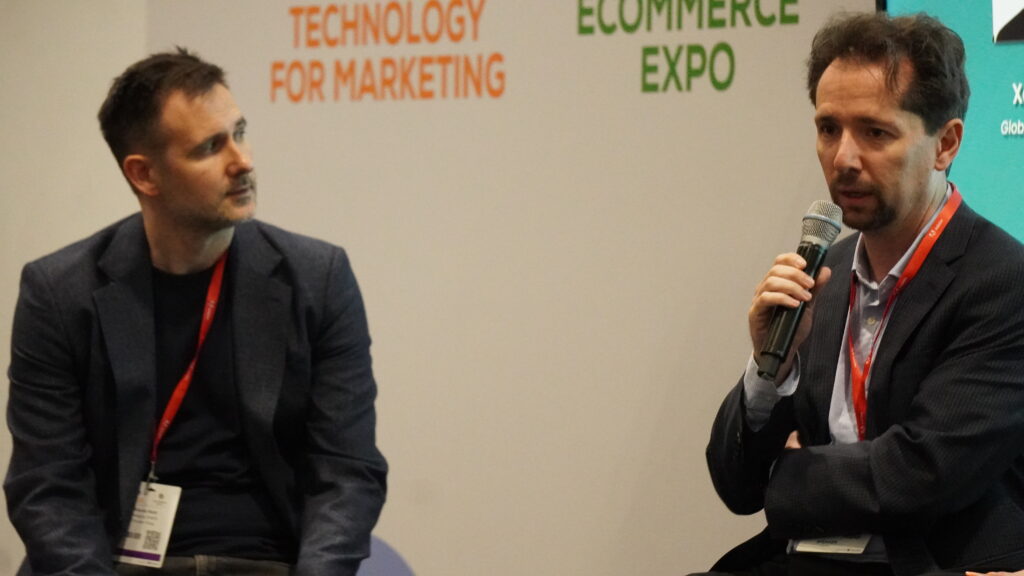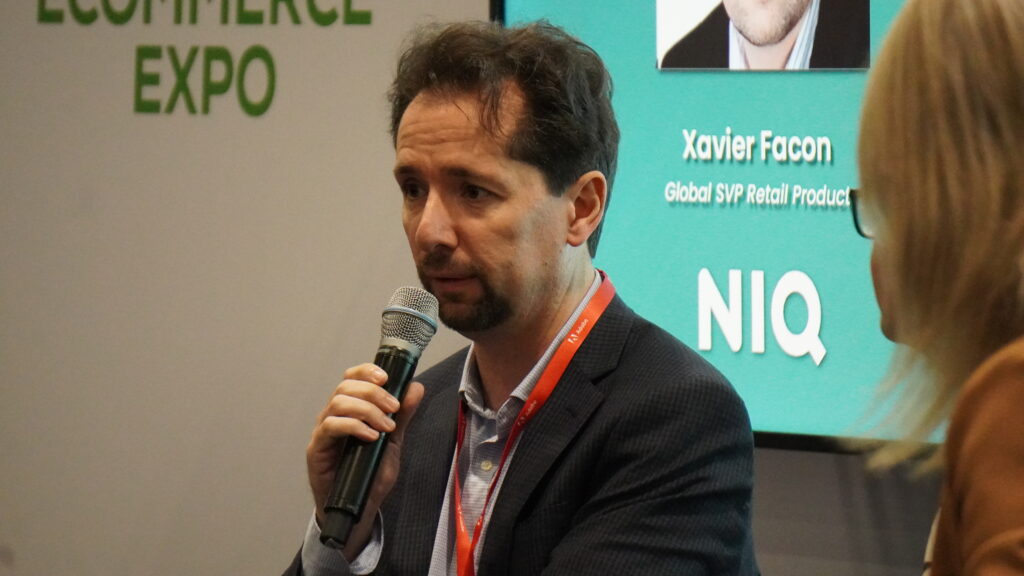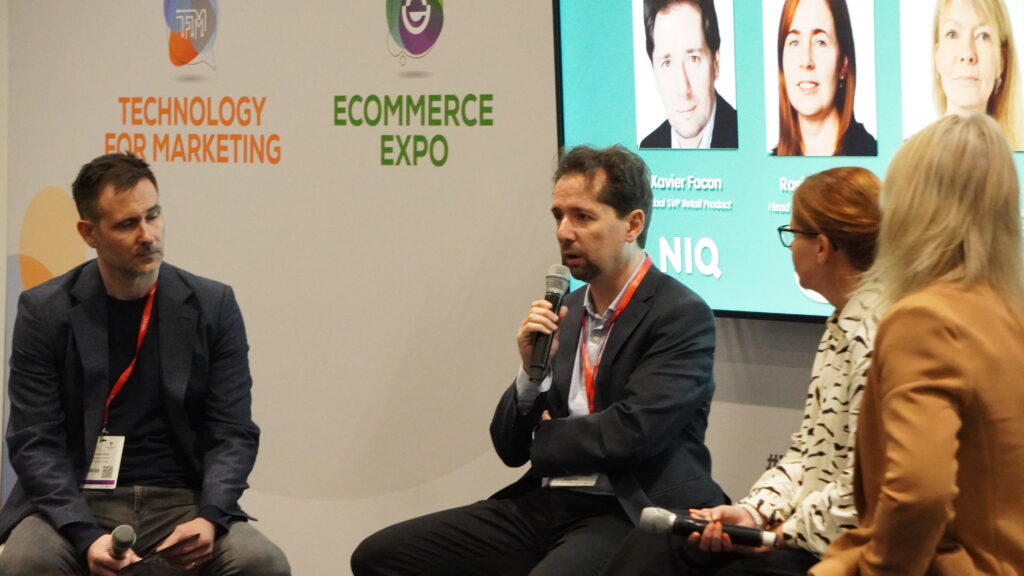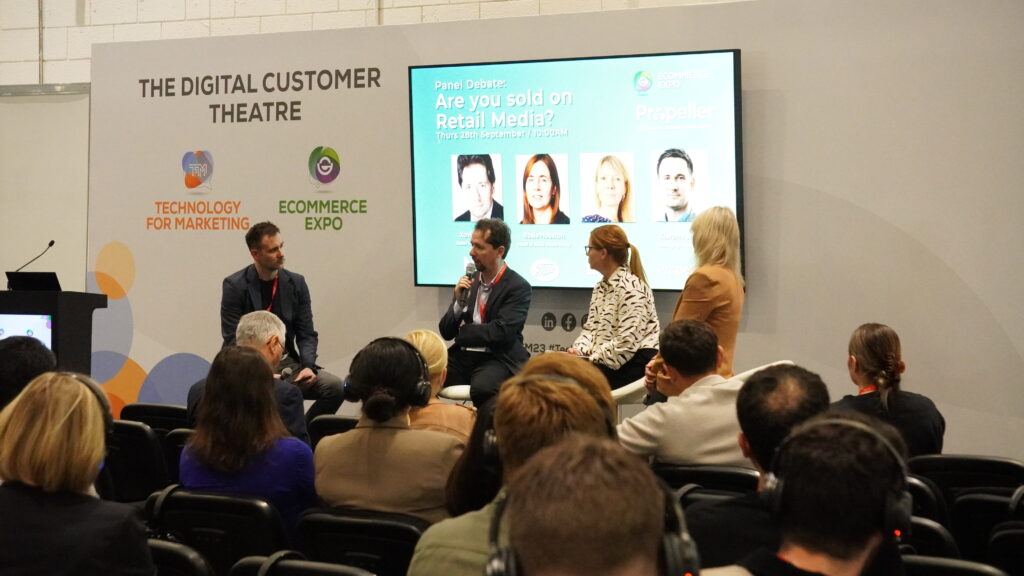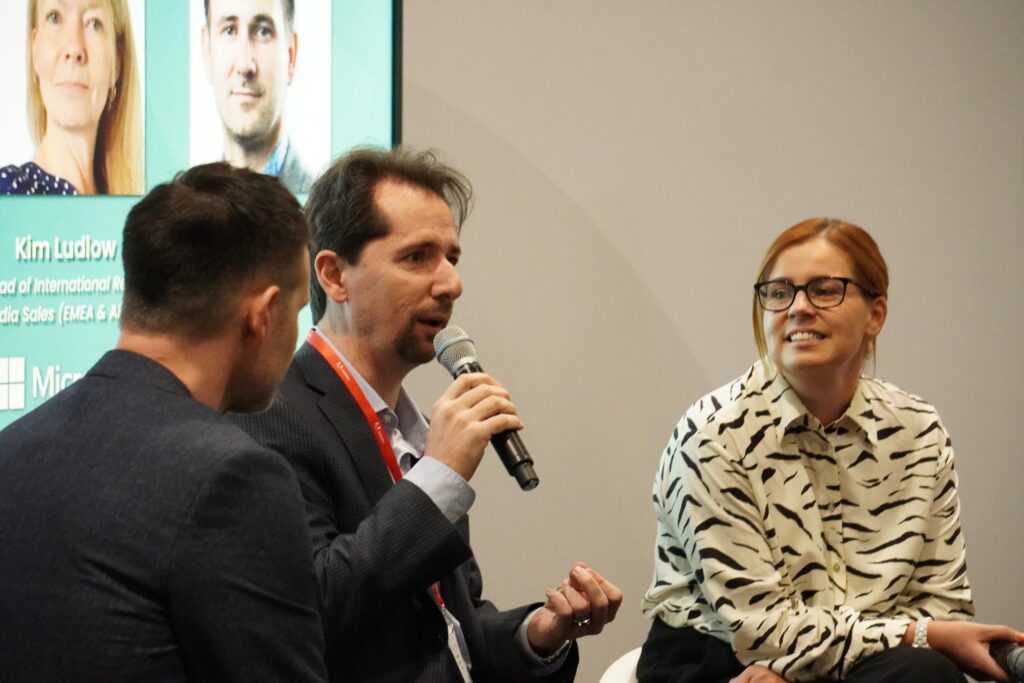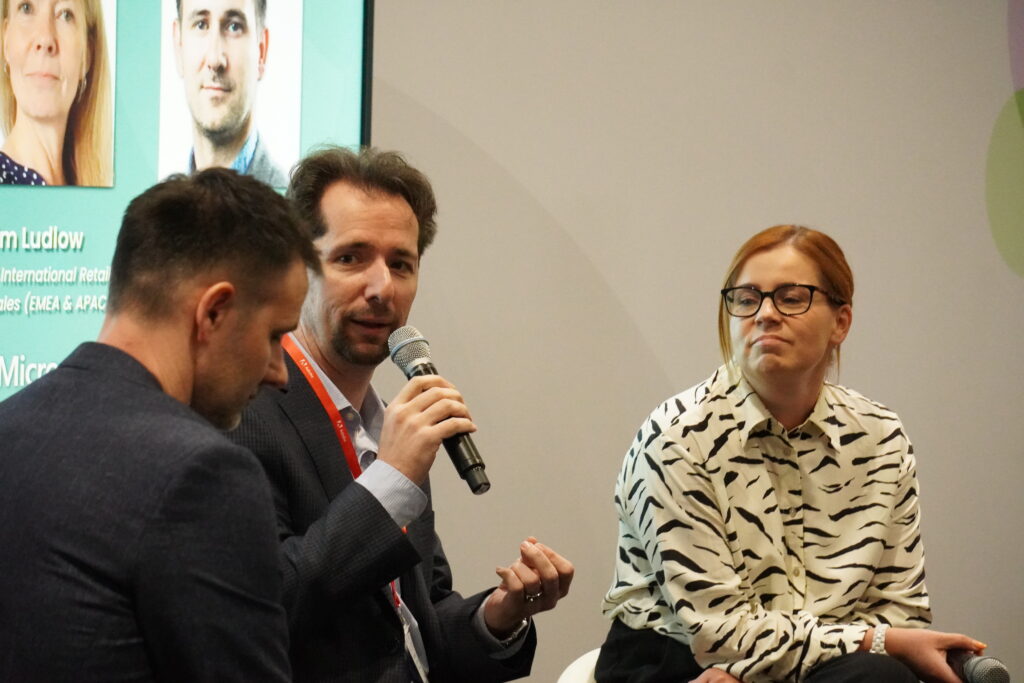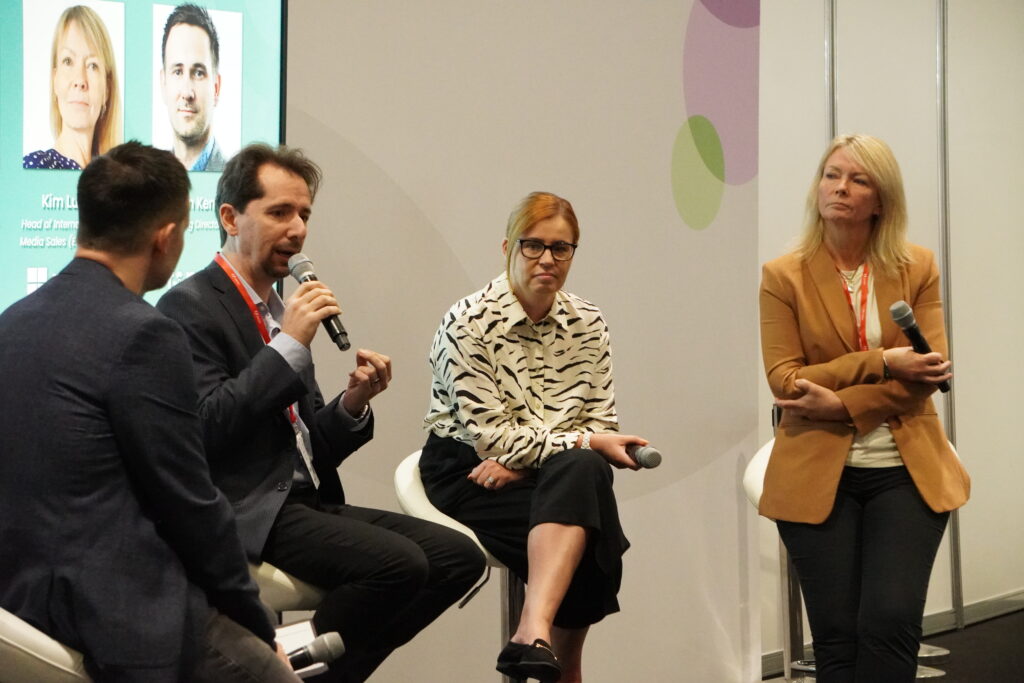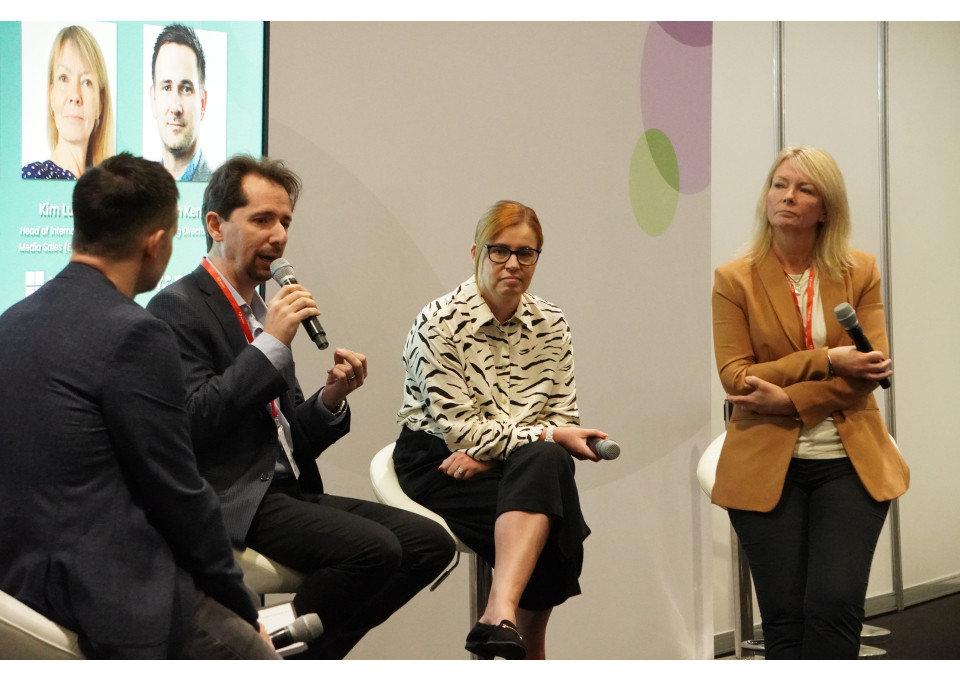
Retail Media is forecast to outpace TV advertising revenue by 2028 and brands and retailers are keen to explore the potential of this media that has evolved rapidly in the digital age. To help better understand the fundamentals of Retail Media we brought together a panel of experts at this year’s eCommerce Expo event.
Propeller Group MD Kieran Kent led the session and was joined by Xavier Facon, Global Senior Vice President for Retail Product at NielsenIQ, Rosie Houston, Head of Boots Media Group and Managing Director at Threefold Agency, and Kim Ludlow, Head of the International Retail Media Sales Division at Microsoft Advertising.
Definitions of Retail Media vary and the panel agreed that some of the descriptions equating it solely with online advertising were too narrow. Xavier explained that at a basic level “it should be something that drives various objectives better than other media channels because of the access to the shopper. The first party access that the retailer has to the shopper should make advertising a lot more effective.”
Kim added that brands are driving the changes in Retail Media: “They’re used to buying media in the programmatic world and getting insights and data and they’re expecting to get the same thing from retailers.”
Rosie put the current heightened interest in Retail Media down to changing shopping journeys, the deprecation of the cookie and the development of technology that allows data to be properly leveraged.
Optimising the potential of Retail Media needs specialist knowledge. Xavier said that to do Retail Media well, buy it efficiently and have confidence to grow that budget “you need to understand both the media side and the retail side”. He explained that the insights derived from transparent, real time data helped brands “close the loop” between digital marketing activity and sales both online and offline.
Kim added that the brand buyers of ‘traditional’ Retail Media were new to digital metrics like impressions, click through rates and Return on Ad Spend and this is where media agencies were able to bring expertise and help brands improve how they drive performance.
The retailer perspective
From a retailer perspective, Rosie explained that Boots’ need for specialist knowledge led it to work with Threefold. She had worked for many years in the Partnership Marketing team at the retailer and while making some revenue the business had reached an inflection point.
She said: “We accepted … that we’re a retailer, not an expert in media or a media owner. We didn’t have the right people skills or the right technology in the team and also the reality is that this was never going to be high on Boots’ overall agenda because there were far too many other priorities.
“So, the benefit of working with Threefold is that we knew they could bring the right skills, the right technology and that they could do it in a much more expedient way than we’ve been able to do internally.”
For the arrangement to work for Boots she said it had to be based on an in-housing model rather than outsourcing.
The range of retailer opportunities
The panel agreed that while Retail Media was a strong tool for CPG and FMCG promotions it can be used for a lot more, ranging from explaining new product launches to driving market share.
The data that retailers collate can also be very useful to non-endemic brands. Xavier cited the US convenience store Dollar General, which has 18,000 stores, as an example of a retailer that has built up a sizeable ad revenue business thanks to a good understanding of shopper behaviour.
Because of the discount positioning of the stores FMCG brands might not want to spend on Retail Media but the data profiles of shoppers can have appeal to Finance, Insurance, Automotive and other sectors.
He added: “They started with creating a playbook for brands, they categorised various types of brands, they looked at the types of penetration that these brands would have and the type of challenges they may have, then they created specific objectives that they think those brands should achieve.
“And using their data or their media from there, they started building the execution, media formats and creative capabilities that they need to achieve those specific objectives. And always very much focused on the analytics behind it.”
Hurdles to developing a successful proposition
To present a fully realised brand offering retailers do have to make unified decisions within the C‑suite and across many teams. Kim said: “It’s very much about the infrastructure of the organisation, not just what the tech is. The tech plays a part in it, but the rest of the business needs to be aligned.
She said there were big players who still were not getting the proposition right because of poor technology infrastructure, while a set of standards does need to be agreed upon and implemented for Retail Media formats and metrics – the IAB is working with the sector on these requirements.
Finding the right talent can be a challenge – as Xavier mentioned there are very few media experts that understand retail: “If you can find that crossover, then you have ultimately gold dust on top of your company because it’s that connection that you need to make with the brands to get the right level of investment into your media business.”
Also, maintaining the quality of the customer experience is paramount for retailers whatever the environment and some will be wary of operating too many screens to deliver messages onsite.
Summing up, Rosie cautioned that retailers looking to develop a Retail Media offering really needed to understand their own business and their customers’ shopping missions: “I think there’s these big headlines out there at the moment, like ‘first party data is the next thing’ and everyone kind of runs towards this.
“But really, really think about what your retail organisation does and who your customer is. I think it should never be channel first. It should be the audience first and the channel will follow because it’s wherever your audience is.”
